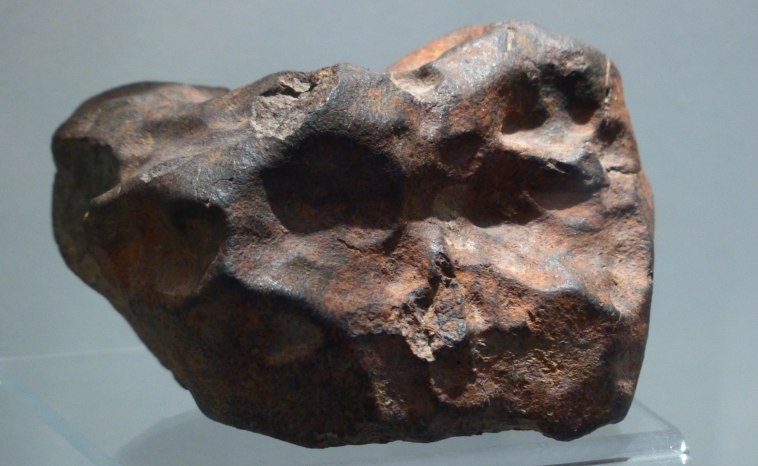How To Find Meteorites

Catching a glimpse of a shooting star can be a mesmerising experience. But how about finding your very own meteorite that’s made its way through space to right here on Earth? In this article, we’ll tell you everything you need to know about how to find meteorites.
Have you ever wished you could find and even hold something from outer space in your hands? There’s something thrilling about discovering a meteorite, an actual piece of the universe that has dashed through space before crashing to Earth. But where do you start looking for one? In this article, we’ll give you a comprehensive guide on how to find meteorites, including what a meteorite actually is, where to look for them, and the tools that can help you to succeed in your search.
What Are Meteorites?
A meteorite is a piece of natural debris that has fallen to Earth from space. These objects can come from asteroids, comets, and other celestial bodies and are often the remnants of planetesimals, objects that began forming into a planet but never reached enough mass to become a fully-fledged planet. Meteorites range in size and shape from tiny fragments to massive rocks. They can also be made from various materials, including stone, iron, a combination of the two, or other metals and minerals.
When such a piece of debris enters the Earth’s atmosphere, friction, pressure and chemical reactions with the atmosphere cause the object to heat up, resulting in a bright streak of light in the sky, known as a meteor or ‘shooting star’. If the object survives its journey and collides with our planet’s surface, it becomes a meteorite.
Recovered meteorites can provide scientists with insight into the composition of planets and asteroids. They can also offer valuable information about the early solar system, such as the conditions that existed when the meteorite was formed. Beyond science, meteorites have had cultural significance throughout human history. Many cultures have created myths and legends surrounding the objects and have even used them to craft artefacts and used them in rituals and ceremonies.

What’s the Difference Between Asteroids, Meteors, and Meteorites?
Many people often use the terms meteorite, meteor, and asteroid interchangeably. And technically, they could even be used to describe the very same object at different stages of its existence. But the terms are essential to identify different things and how they interact with our planet.
Asteroids
Asteroids are rocky, icy, or metallic objects that orbit the sun. Most inhabit the main asteroid belt between Mars and Jupiter. Asteroids can range from as little as a metre in diameter or as big as 1,000 km or even greater. Many asteroids are known to have close approaches to our planet, and astronomers even designate some as potentially hazardous. Still, the overwhelming majority do not threaten Earth and its inhabitants.
Meteors
On the other hand, a meteor is an asteroid, comet or meteoroid (essentially a very small asteroid) that visibly passes through the Earth’s atmosphere. When the meteor enters the atmosphere, it heats up and creates a streak of light in the sky known as a ‘shooting star’. Most meteors burn up completely before reaching the ground. However, larger objects can survive the descent and impact the Earth’s surface. Enter meteorites.
Meteorites
Meteorites are the remnants of meteors that survive their fiery descent through the atmosphere and hit the planet’s surface. Recovering these objects can give scientists an excellent chance to learn more about the composition of our solar system and how planets form.
How To Find Meteorites
Finding a meteorite can be a hugely thrilling and rewarding experience. When arming yourself with the correct information, equipment, and search methods, you can hugely increase your chance of success. Read on for all our tips on how to find meteorites. Happy hunting!

No machine-readable author provided. Calips assumed (based on copyright claims)., CC BY-SA 3.0, via Wikimedia Commons
No machine-readable author provided. Calips assumed (based on copyright claims)., CC BY-SA 3.0, via Wikimedia CommonsWhere To Find Meteorites
Before heading out to try and find a meteorite, you must do your research. Look for nearby places where meteorites have previously been found. Find locations with very little vegetation, such as deserts or dry lake beds. You can also try searching near known impact craters or areas with high concentrations of iron meteorites. A quick internet search can give you a wealth of information on any such locations in your vicinity.
Get the Right Gear
With the research legwork complete, it’s time to get the right equipment together. Most meteorites that survive the descent to Terra Firma contain at least some iron, so a metal detector is essential. For best results, try to find a detector that’s sensitive to small metallic objects. You’ll also need a strong magnet to help you distinguish between meteorites, which often contain magnetic iron and nickel, and other metallic but non-magnetic things.
It’s also important to consider your own safety when searching for meteorites. Always wear clothing and footwear suitable for the weather conditions and terrain you will explore. Bring enough water and snacks to stay hydrated and energised. And if you are searching in remote areas, always tell someone where you are going and how long you expect to be there.
Searching for Meteorites
When you’re trying to find meteorites, patience is key! Walk through your search area slowly and carefully, paying attention to any signals from your metal detector. Spend time investigating any magnetic rocks or areas with high concentrations of iron. And remember that meteorite remnants very often appear in clusters – so if you find one, keep scouring the site for more objects.
What Do Meteorites Look Like?
While they can differ in appearance, there are a few clues that can help you determine if you’ve found a meteorite. Due to the presence of iron or nickel, meteorites are heavier than their size suggests. Furthermore, after experiencing intense heat during its descent, meteorites often have a black ash-like crust on their surface.
Meteorites with iron or nickel inside will make a magnet stick to them, but even stony meteorites can have a trace amount of metal – dangle a magnet on a string near the suspected space rock, which should attract it a little bit. Finally, meteorites don’t tend to be round but have an unusual shape and, sometimes, thumbprint-like pits called regmaglypts on their surface.
It’s important to remember that not all rocks that look like meteorites are actually meteorites – some rocks can have a similar appearance or composition to meteorites. Thankfully, plenty of professional services are available for assistance if you are trying to confirm whether you have a meteorite on your hands.
If your suspected space rock contains quartz, surface bubbles, or leaves a red or black streak on a non-glazed ceramic tile, then unfortunately, it’s not a meteorite. Keep searching!
Legal Concerns
When trying to find meteorites, it’s essential to respect the environment and any laws or regulations that might be in place in the area. As most land is owned by someone, it’s necessary to ask for permission before beginning a search on private property or in a protected area. Furthermore, some places might have specific rules prohibiting the collection of meteorites or other rocks and minerals. Respect any such laws, and don’t leave anything behind except your footprints – try to leave the area in a better condition than how you found it.
OSR Gift Pack
If you’re not having any luck finding a meteorite to give as a gift to a space-obsessed friend, why not consider the OSR Gift Pack instead? Along with the chance to name a star, your pack will also include a personalised letter and certificate, a detailed star chart, a glow-in-the-dark star sticker, and a card with a personal message, all delivered in an envelope that fits inside any mailbox.

